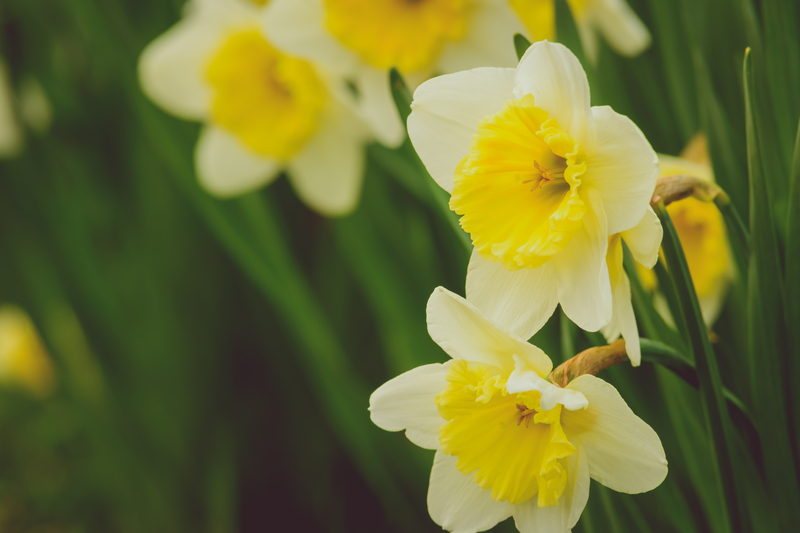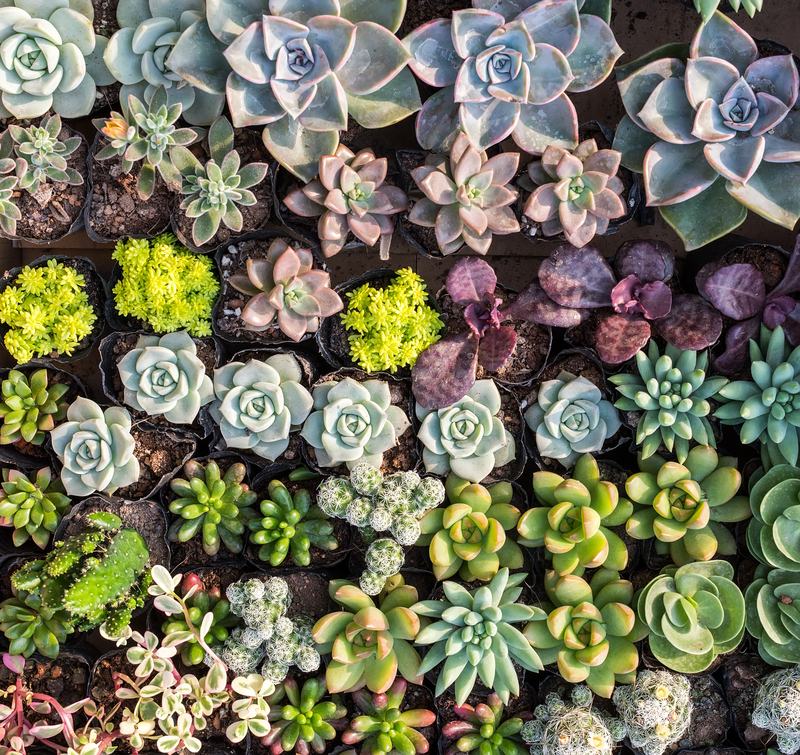How to Create a Vibrant Garden Paradise for Kids
Posted on 16/10/2025
A garden paradise is not just a delight for adults -- it can be an enchanting, educational, and stimulating space for children too. In today's fast-paced, tech-focused world, giving kids their very own vibrant outdoor haven encourages connection with nature, inspires creativity, and supports physical and emotional growth. If you're looking for comprehensive tips and ideas on how to create a vibrant garden paradise for kids, you've come to the right place! Below, we'll guide you through every step to design, build, and nurture a garden that will be your child's favorite place to play and learn.
Why Design a Kid-Friendly Garden?
Before diving into the "how-to," it's important to understand why a vibrant children's garden is beneficial for your family. Creating a colorful, interactive space outdoors nurtures children in many ways:
- Creativity and Imagination: Natural materials spark imaginative play and artistic expression.
- Physical Activity: Outdoor games and gardening keep kids active and healthy.
- Education: Experiencing how plants grow and insects interact teaches biology, ecology, and responsibility.
- Emotional Wellbeing: Green spaces help reduce stress, improve mood, and create lasting family memories.

Planning Your Vibrant Kids' Garden Paradise
Assess Your Space and Set a Budget
Start with a careful review of your yard or garden area. Consider:
- Sunlight and Shade: Track where the sun and shade fall throughout the day to decide on plant positions and play zones.
- Safety Hazards: Identify potential dangers, such as toxic plants, sharp objects, ponds, or low fences. Plan to eliminate or secure these areas.
- Water Access: Will your kids' garden paradise need irrigation, or will watering cans suffice?
- Budgeting: List your must-haves (playhouse, sandpit, raised beds) and nice-to-haves (decor, pond). Set a realistic spending limit.
Involve Your Children in the Process
Letting your kids make choices gives them ownership and enthusiasm. Invite them to:
- Sketch garden plans
- Pick favorite flowers and vegetables
- Help shop for seeds and decorations
- Suggest play equipment ideas
Designing a Vibrant & Colorful Garden Paradise
Define Fun Zones
Section your garden into distinct, exciting "zones" to cater to a variety of interests and activities. For example:
- Discovery Zone: Hidden paths, tunnels, or secret dens encourage adventurous play.
- Planting Zone: Allocate patches or raised beds for children to cultivate their own plants.
- Play Area: Swing sets, sandpits, mud kitchens, and water tables offer hands-on fun.
- Relaxation Nook: A hammock or hideaway with comfy cushions invites reading and quiet time.
- Creative Corner: Set up an outdoor art table or chalkboard for drawing and crafting.
Choose Vivid, Child-Friendly Plants
The heart of a colorful kids' garden is the plants! Look for options with bold colors, interesting shapes, and appealing scents. Here are some top choices:
- Sunflowers -- Tall, cheerful, and fast-growing for instant impact.
- Nasturtiums -- Bright, edible flowers; fun to grow and taste!
- Marigolds -- Hardy, vibrant, and great for bug-repelling.
- Snapdragons -- Fun "mouths" for little hands to squeeze.
- Herbs such as mint, basil, and chives -- Sensory plants for touching and smelling.
- Pumpkins and Strawberries -- Easy edibles with exciting results.
- Grasses like fountain grass -- For tactile, swaying fun.
Be sure to avoid toxic plants such as foxglove, oleander, or hemlock. If unsure, always double-check before planting.
Incorporate Sensory Elements
A vibrant garden paradise for kids stimulates all the senses! Here's how to make it a rich sensory experience:
- Touch: Lamb's ear, moss paths, textured bark, sandpits.
- Sight: Mirrors, wind spinners, rainbow flowerbeds, bright pots.
- Sound: Wind chimes, rustling grasses, a trickling fountain.
- Smell: Lavender, jasmine, scented roses, lemon balm.
- Taste: Edible flowers, fruits, and herbs.
Building Fun Features and Play Structures
DIY Projects for a Vibrant Backyard Wonderland
Many fun features can be created with basic materials, sparking joy and saving costs. Try these ideas:
- Willow Dens or Tunnels: Create living playhouses from willow cuttings that will grow and form magical hideaways.
- Bug Hotels and Butterfly Feeders: Help children attract and observe beneficial insects up close.
- Stepping Stones: Paint or mosaic stones for paths through the beds, guiding little feet to secret spots.
- Pallet Sandpits and Mud Kitchens: Upcycle wood for hands-on, sensory fun zones.
- Fairy Gardens: Use mini furniture and plants to make tiny magical worlds.
- Bean Teepees: Grow bean plants up bamboo canes to create natural forts for shady play.
Safety First
- Check and repair fences; install self-closing gates as needed.
- Keep paths even, non-slip, and clear.
- Avoid slippery decking and raised platforms without guard rails.
- Store garden tools and chemicals out of children's reach.
- Use only child-safe, non-toxic paint and finishes for equipment and decor.
Safety should always come first when designing any active or adventurous children's garden.
Encouraging Wildlife: Making Your Garden Buzzing with Life
To truly create a vibrant garden for children, invite wildlife to share the space. This provides endless fascination and teaches kids about ecosystems.
- Plant Pollinator-Friendly Flowers: Lavender, buddleia, and cosmos bring bees and butterflies.
- Make a Mini-Pond: Even a shallow container pond attracts frogs, newts, and visiting birds.
- Install Bird Feeders and Baths: Hang them safely away from cats for frequent feathered visitors.
- Add Logs or Rock Piles: These offer hiding places for bugs, beetles, and slow-worms.
- Leave a Wild Corner: Let nettles or long grass grow to inspire mini-beasts and exploration.
Learning about wildlife in your own garden paradise is endlessly rewarding for children and adults alike.
Year-Round Activities in a Kids' Garden Paradise
Springtime Planting
- Start seeds indoors or direct sow hardy blooms like sunflowers and sweet peas.
- Hunt for worms and beetles under stones and leaves.
- Mark plant rows with painted stones for bright garden markers.
Summer Splash
- Set up water tables, sprinklers, or a paddling pool for safe cooling off.
- Host a bug safari--who can spot the most pollinators?
- Harvest sweet strawberries, peas, or baby tomatoes fresh from the vine.
Autumn Harvest
- Collect leaves for crafts, pressings, or composting.
- Dig up potatoes, pumpkins, and carrots grown in the child's patch.
- Prepare the garden for winter with tidy-up games or wildlife shelter making.
Winter Magic
- Create nature-inspired art using twigs, pinecones, and berries.
- Refill bird feeders and watch for winter visitors.
- Plan next year's vibrant children's garden projects together.
Tips for Low-Maintenance and Success
For a thriving children's garden paradise, keep things simple, robust, and easy to care for:
- Pick Hardy Plants: Choose flowers and shrubs that can handle rough play and little hands.
- Mulch Beds: Help conserve water and reduce weeding.
- Irrigation: Soaker hoses or watering cans make watering easier and fun for kids.
- Sized-Right Tools: Invest in child-sized spades, gloves, and watering cans.
- Keep It Accessible: Raised beds or container gardens put plants within easy reach for small children.
Inspire Curiosity and Learning
A garden paradise for kids is a living classroom. Encourage learning with:
- Nature Journals: Provide notebooks for children to sketch or write about plants and creatures they find.
- Story Time Outdoors: Read books about gardens, bugs, or fairies under a shady tree.
- Science Experiments: Plant beans in jars to watch roots grow, or measure sunflowers as they shoot up.
- Theme Gardens: Devote small areas to favorite stories, rainbow colors, or pizza toppings children can then cook with!
Decorating Your Children's Garden Paradise
Make the space even more inviting with playful garden decor:
- Spin colorful pinwheels, wind socks, or weatherproof flags to add motion.
- Upcycle old boots, teapots, or tins into quirky planters.
- Put up painted wood signs with fun, positive messages or plant names.
- Add solar fairy lights or lanterns for evening magic.
- Create a mural fence or wall for children to paint and repaint throughout the season.

Community and Social Play
Encourage your child to share their vibrant garden haven with friends, family, or neighbors:
- Host garden tea parties, bug hunts, or treasure trails.
- Collaborate with neighbors for a "garden hop" across several yards.
- Grow and swap seeds or cuttings with other little gardeners.
- Celebrate harvests with a mini farmers' market or homemade pizza night using the garden crops.
Final Thoughts: Growing a Lifetime Love of Nature
Knowing how to create a vibrant garden paradise for children is about more than just plants -- it's about creating a safe, stimulating, and magical world where young ones can explore, learn, and grow. With thoughtful planning, colorful planting, engaging DIY features, and lots of involvement from kids, your garden can become a cherished space for the whole family. So, get planting, digging, building, and let your child's garden adventure begin!
Remember: The most beautiful children's gardens aren't always the neatest or the largest, but the ones that spark laughter, learning, and wonder all year round.

